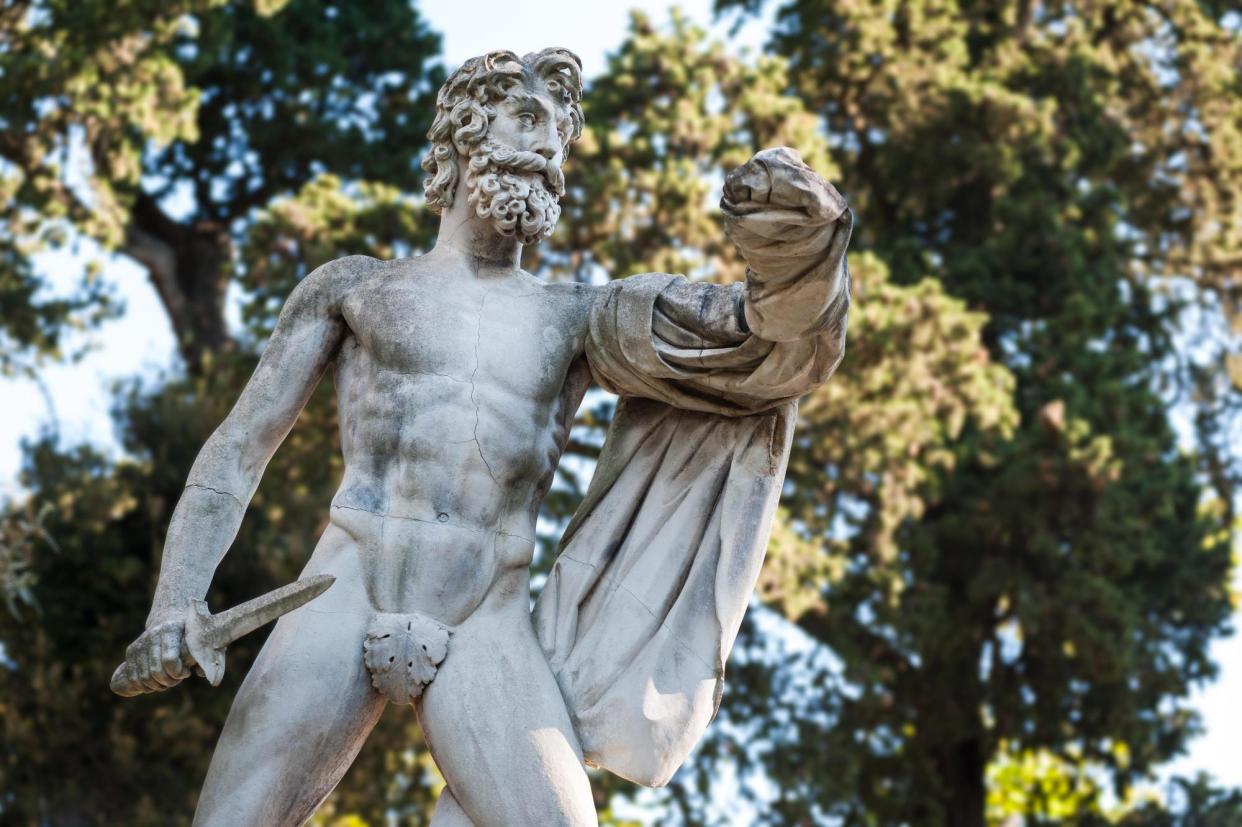Readers reply: why do we wear underwear – and when did we start doing so?

Why do we wear underwear – and when did we start doing so? Kathy Thomas, Isle of Wight
Send new questions to nq@theguardian.com.
Readers reply
Because fig leaves begin to wilt after a few days. UKClimber
Underwear is an ancient garment meant to protect our most sensitive and vulnerable parts. Can you imagine the Romans in battle without an undergarment to protect them from the abrasions of their armour, or from weaponry? For women, it’s slightly different. It’s to protect our bits, but it’s also a sanitary product. Today, underwear is practical for most people, but it has turned into a fashion statement. There’s nothing wrong with this, it’s just made all underwear more expensive. archaeologist4life
It’s a question of hygiene, certainly. The added protection keeps us clean and wards off the unsavoury consequences of sweat and bodily functions. But there’s more to it than practicality. Underwear has always been about shaping the body, about subtle whispers of support and control. It speaks of modesty, too, of course, drawing a veil over the parts of ourselves we deem too intimate for the wider world.
As for the beginnings? Well, that’s where it gets interesting. Loincloths date back a staggering 7,000 years. Think ancient Egyptians, their linen swaths as starkly white as their grand temples. Later, through the ages, underwear evolved – from the rough shifts of medieval peasants to the opulent lace and silk confections of royalty. So, the next time you don your briefs or knickers, spare a thought for this surprisingly noble history. Underwear, it seems, isn’t just about hidden support – it’s a thread woven through the very fabric of human experience. Soltani
Very simple: Regency dandies in the early 19th century found that wearing white breeches, which were all the rage among the “fancy” who ate and drank copiously, meant there was a tendency to pass wind. This could have a disastrous effect. Sometimes the wearer of said white breeches was unaware of the mishap, which could lead to an embarrassing situation. JS
Why do we wear underwear? People in the US who work outdoors have long worn underwear for an additional layer of insulation against the cold. Cotton is commonly used, but wool is better and the various modern synthetic fabrics, which insulate and “wick” away sweat from the body, are now gaining popularity (although they are more expensive).
I don’t know exactly when the wearing of long underwear by outdoor workers in the US began. But it is known that 19th-century outdoor workers (farmers, miners, loggers, railway workers) wore long underwear. This was also the era that gave us denim jeans, which were originally designed for miners during the California gold rush. I have no idea what outdoor workers in the US wore in the 18th century. Today, I wear synthetic long underwear in the winter, as I live in Maine, a state with very cold winters. In the summer, I wear lighter briefs and T-shirts, but they are made from wicking synthetics, which are more comfortable in hot weather. So, I would answer the “why?” question with “temperature control”. There are other reasons to wear underwear, but I wanted to make sure that the purely physiological reasons are not ignored. Nash437
Related: Medieval bras discovered at Austrian castle
Bras are generally thought of as a 20th-century invention, but there’s a fourth-century Roman fresco from the Piazza Armerina in Sicily depicting female athletes wearing what appear to be bikinis, while four startlingly modern-looking 600-year-old bras were unearthed in a castle in Austria during archaeological investigations. exlangrandeflaneuse
Historically, even the fairly wealthy owned relatively few articles of clothing and washing them regularly, even if the fabric would allow it, reduced their lifespan considerably. Undergarments made of less costly and more washable fabric protected the more expensive garments. CalMarc25
Once upon a time, we did not have moist toilet wipes, luxury toilet roll and menstrual products. It’s easier to wash and change underwear than it is to wash and change our main lower-body garments; this was especially true in eras before washing machines and dryers. NotSoInterested
I started going commando when I moved out of the family home and had to do my own laundry and purchase clothing for myself. I never looked back. jmad357
How many people would like to try on a pair of trousers in a store after you’d worn them – even if only for a minute? PeteTheBeat
In case we get hit by a car. AndyClaus
On a very, very hot day I’ve discovered that no underwear under a knee-length, sleeveless, cotton dress feels gloriously fresh and cool. My breasts aren’t large enough to need a bra and not wearing pants makes you realise how restrictive and hot they are. The dress has to be reasonably figure-hugging or you’d cause a sensation on a windy day. It makes you question underwear completely. But only in summer. Felicie


